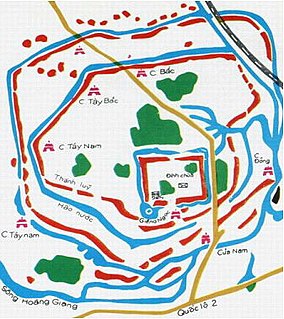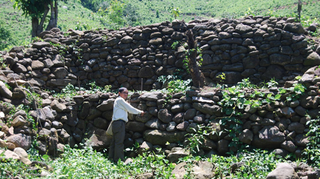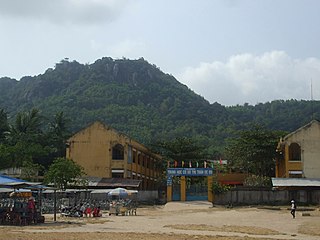 W
WCát Tiên archaeological site or Cát Tiên Sanctuary is an archaeological site located between the two sectors of Cát Tiên National Park. Accidentally discovered in 1985, this site ranges from Quảng Ngãi Commune to Đức Phổ Commune, with the main archaeological artefacts concentrating in Quảng Ngãi, Cát Tiên District, Lâm Đồng Province, southern Central Highlands. The unknown civilization which developed this site inhabited it between the 4th century and 9th centuries AD.
 W
WCổ Loa Citadel is an important fortified settlement and archaeological site in present-day Hanoi's Dong Anh district, about 16 kilometers (10 mi) northeast of Hanoi city center. Various relics of the Bronze Age Phung Nguyen culture and Dong Son culture have been found in Cổ Loa, although it was later established as the capital of Âu Lạc Kingdom during the 3rd century BC. Further construction was added during the later dynasties. Cổ Loa remained an important political center of the Vietnamese people until the 10th century.
 W
WThe Con Moong cave is located in the Cúc Phương National Park, just south of Mọ village, in the Thanh Hóa Province, northern Vietnam. The Cúc Phương National Park administration not only manages a refuge for rare animals. The Department of Culture has also issued a certificate, that declares Con Moong prehistoric site and its surroundings as National Relics. Among these locations, the archaeological site of Con Moong cave is of central importance for the study of the Mesolithic Hoabinhian culture. In April and May 1976 Vietnamese archaeologists have excavated the site.
 W
WIndrapura was the capital city of the ancient kingdom of Champa from 875 CE, for several decades, under the reign of Indravarman I (877-890) and some of his followers belonging to the 6th dynasty in Dong Duong. The word Indrapura means "City of Indra" in Sanskrit, Indra being the Hindu God of Storm and War, and King of the Gods in the Rig Veda.
 W
WThe Long Wall of Quang Ngai, Truong luy, or the Great Wall of Vietnam is a 127.4-kilometre (79.2 mi) rampart extending from Vietnam's Quảng Ngãi Province in the north to Binh Dinh Province in the south. The defensive wall was built by the Nguyen Dynasty as a demarcation line against the Đá Vách. It is the longest monument in Southeast Asia.
 W
WMán Bạc is a Neolithic archaeological site located in Yên Mô District, Ninh Bình Province, Vietnam, dated from around 1,850–1,650 BC. Mán Bạc is associated with the Phùng Nguyên culture. With 95 burials found at the site, Mán Bạc is the largest and most intact site associated with the Phùng Nguyên culture, surpassing the site at Lung Hoa.
 W
WMỹ Sơn is a cluster of abandoned and partially ruined Hindu temples in Quảng Nam province, central Vietnam, constructed between the 4th and the 14th century by the Kings of Champa, an Indianized kingdom of the Cham people. The temples are dedicated to the worship of the god Shiva, known under various local names, the most important of which is Bhadreshvara.
 W
WÓc Eo is an archaeological site in Thoại Sơn District in southern An Giang Province, Vietnam, in the Mekong River Delta. Óc Eo may have been a busy port of the kingdom of Funan between the 2nd century BC and 12th centuries.
 W
WPhong Châu (峯州) was the capital city of Văn Lang for the most part of the Hồng Bàng period, from the Third Dynasty to the Eighteenth Dynasty of Hùng kings.